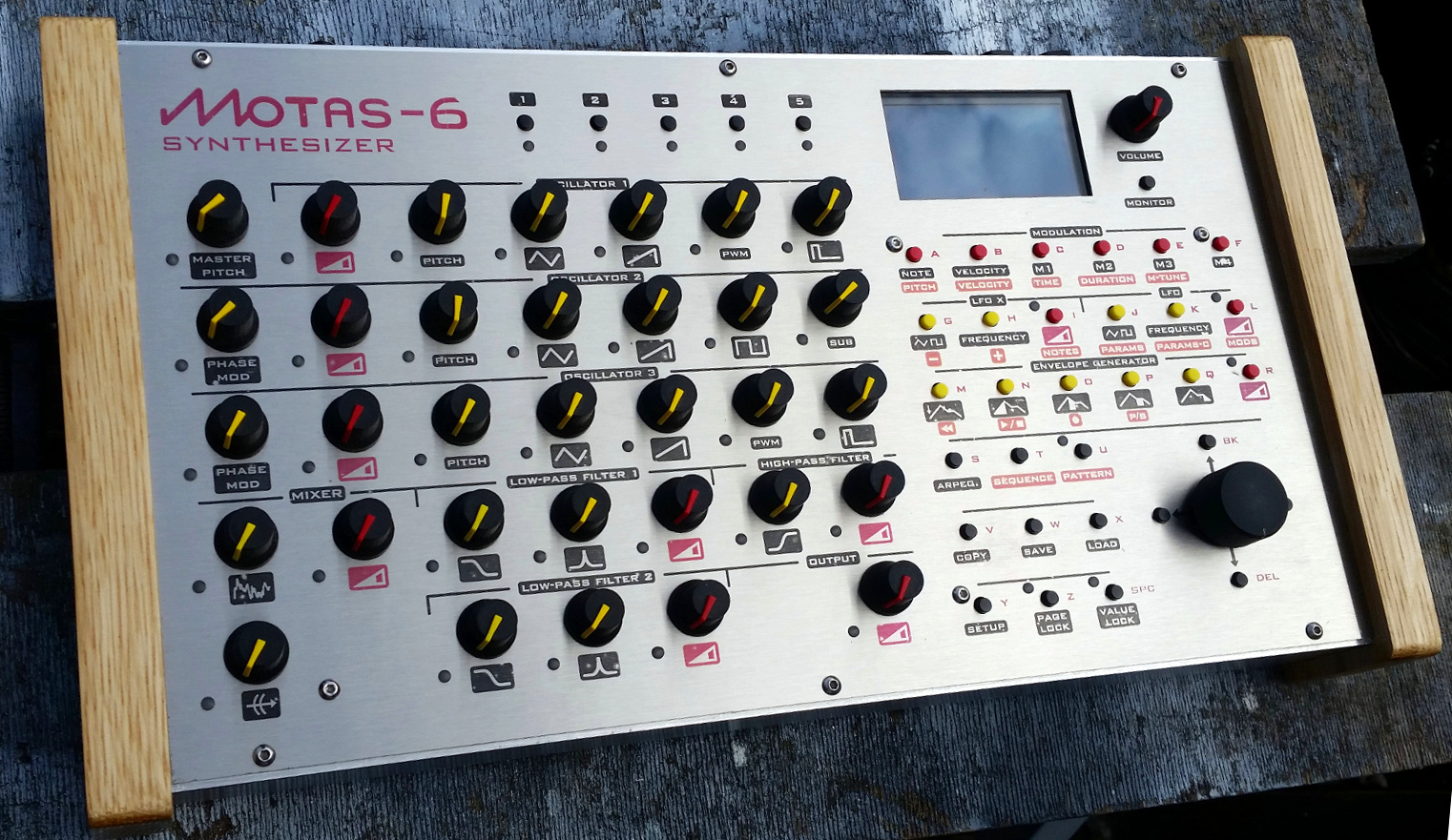How the Motas project began...
Many, many years ago I decided to try to make my own analogue synthesizer since I loved the rich sound, buying one was out of my price range, and it seemed like a fun thing to do!
Many of the revered synthesizers (at least amongst the artists I liked) were not generally using the new digital models - the preferred sound generating architecture was analogue (purely digital synths were the mainstream new synths in the mid to late 80s). Learning about electronics at school, home and later at university I started to investigate making my own synthesizer. I drew the first schematics by hand on stapled bits of paper and build my first one ... Motas 1. It had a badly made 'stylophone type' playing interface and no MIDI.
Motas 1 (c. 1994)
Motas 1 was created around 1994, and it wasn't all that great.... it behaved a little like a theramin (unintentionally) - as you used it and moved around it the oscillators changed pitch. It had three oscillators and, rather oddly, a low-pass filter in series after each oscillator. Unfortunately I don't have any photos of Motas 1, and it was broken up in order to provide many of the parts for Motas 2, my second synthesiser.
What does remain are photos of the original schematic.
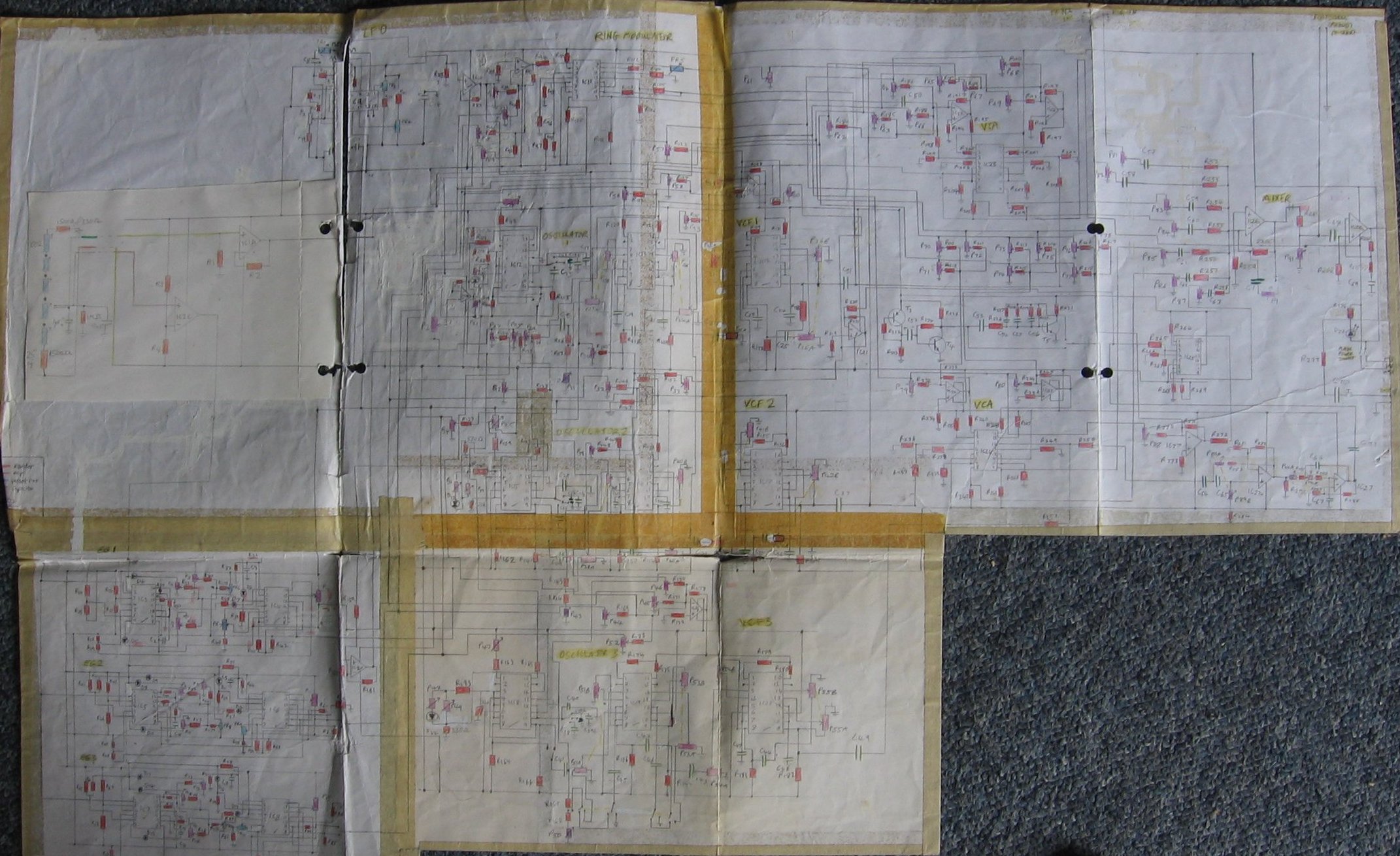
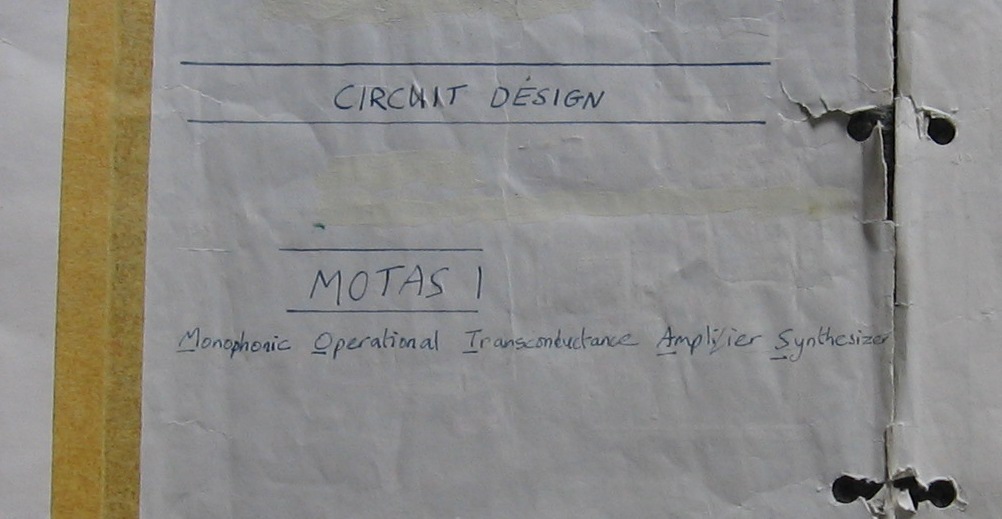
Where does the name 'Motas' come from?
All that time ago I wanted a name for my new creation. A key chip used in Motas 1 (for the voltage-controlled filters and amplifiers) was the LM13700 Operational Transconductance Amplifier, or 'OTA'. So the name Motas stands for (M)onophonic (O)perational (T)ransconductance (A)mplifier (S)ynthesizer - as you can see in the photo above!
Motas 2 (c. 1997)
My next synthesizer, Motas 2 was finished around 1997. This time it was a success. This had the more conventional 3 oscillators into a mixer and then onto the filters. It had a 36-pole low-pass filter (with separate outputs for each pole) and a 2-pole high-pass filter.
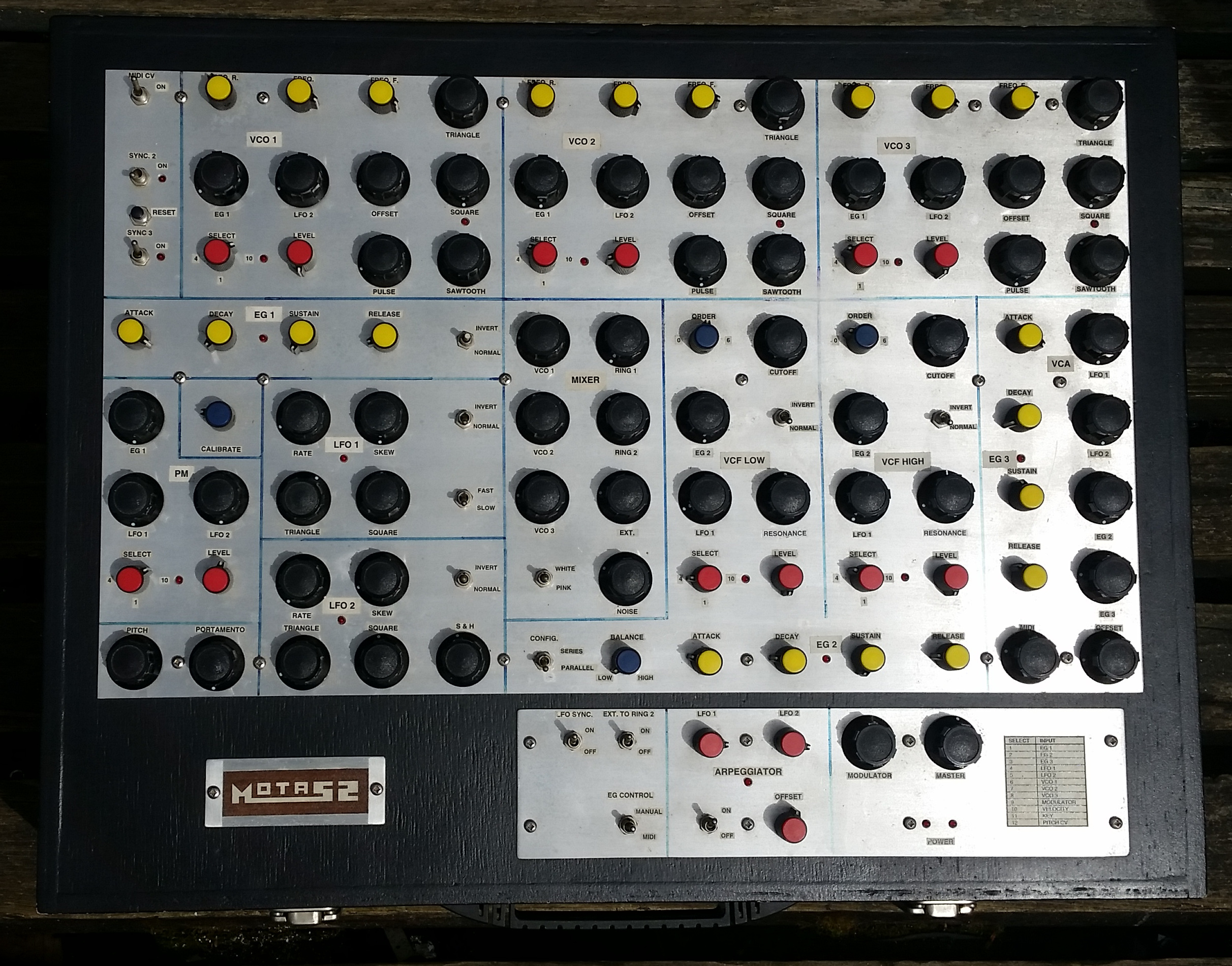
Motas 2 still sounds great, it is a little noisy, but very raw. Motas 2 has a very 'fat' sound using all 3 oscillators. The only digital electronics in the Motas 2 are the logic chips to decode the incoming MIDI data (no microcontrollers here).
Motas 3 (c. 2001)
After quite a few more years I decided to build another synthesizer, but this time making the internal electronics modular in design allowing easier changing/upgrading. The result was Motas 3 - a little more refined compared to Motas 2 in terms of it's noise making, and much better at keeping in tune. Still all of the circuitry was analogue except for the logic chips used for, very basic, MIDI decoding.
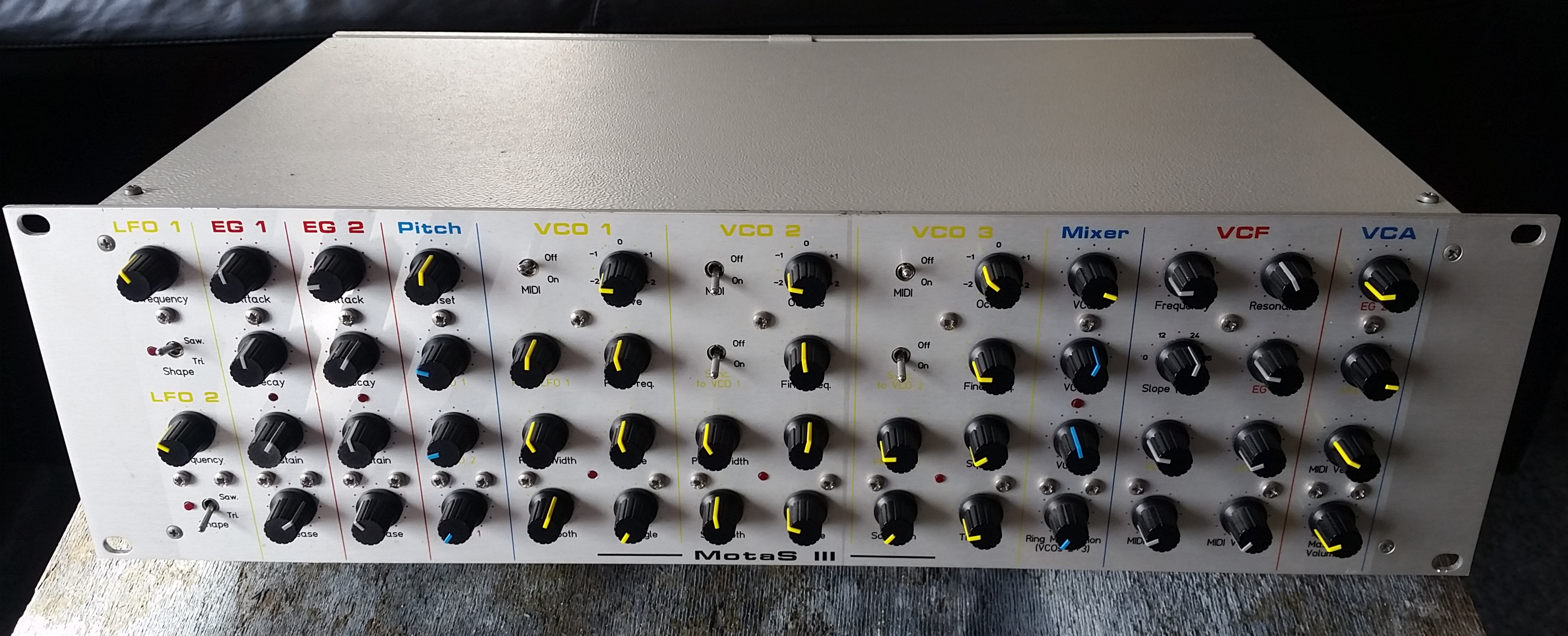
Motas 4 (c. 2011)
After many years of planning and research (together with lots of commercial experience designing analogue and digital electronics systems) I built another synthesizer, Motas 4. This is a powerful digitally controlled analogue synthesizer with 3 analogue oscillators, 3 filters and huge modulation possibilities together with full MIDI and USB MIDI control. The system has an OLED display and is controlled by push buttons and a rotary encoder.
I have made 3 variations of Motas 4. One with an aluminium front panel, one in plastic and another in walnut. The first was completed around 2011.
Here is Motas 4 with an aluminium front panel:
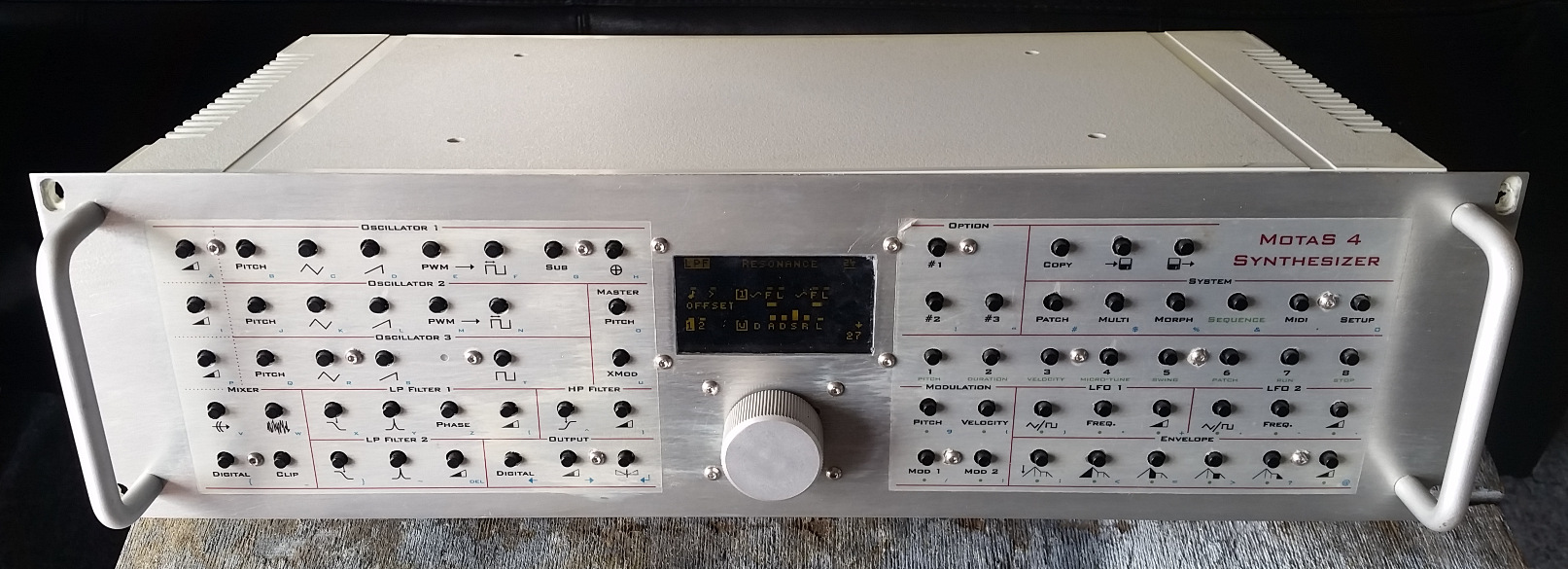
Here is the Motas 4 plastic variant.
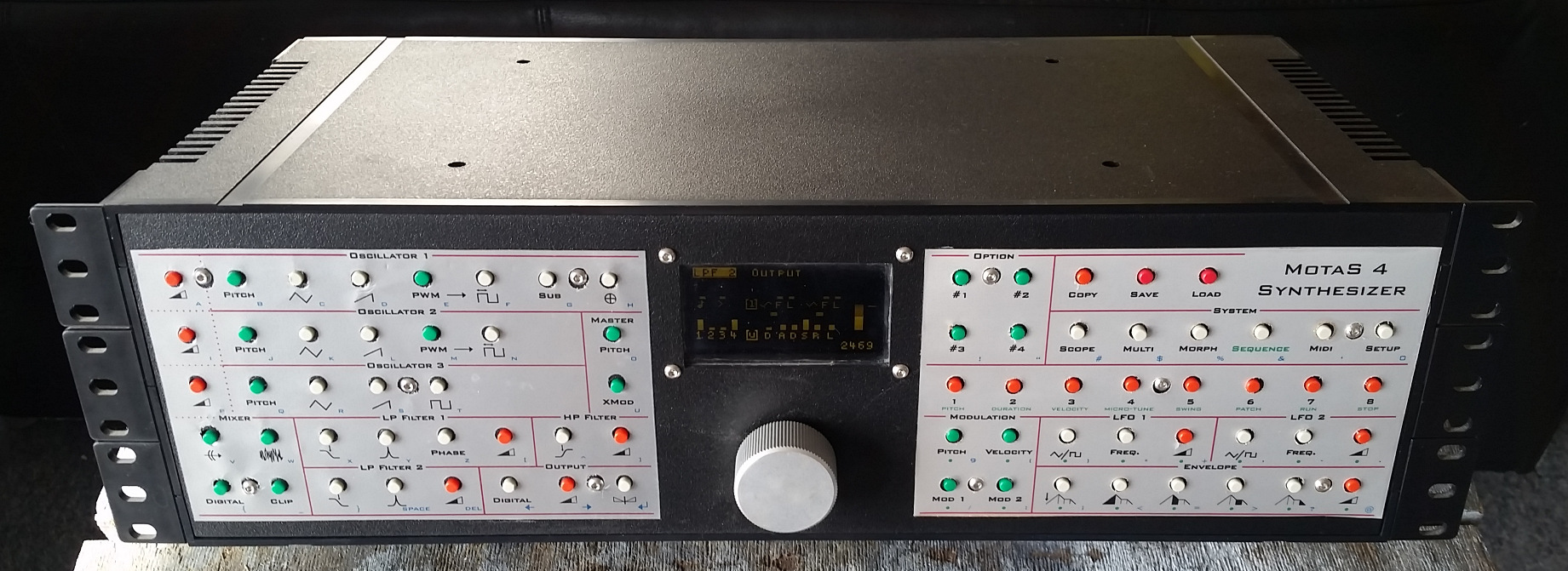
And the rather spendid finish of the Motas 4 in solid walnut, with aluminium panels for top, bottom and rear:
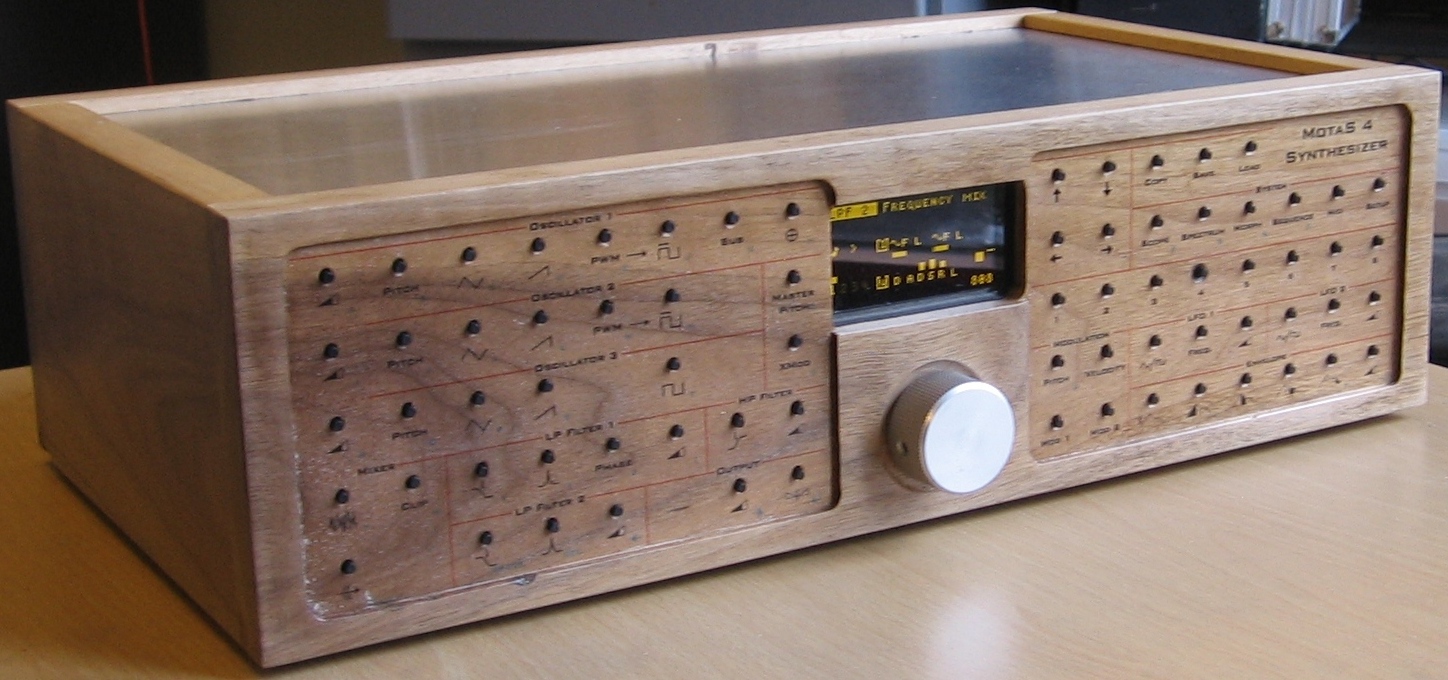
Motas 5 (c. 2015)
The next model was Motas 5, a development of Motas 4 into a more space efficient desktop case with improved sound quality, a better user interface and improved build quality.
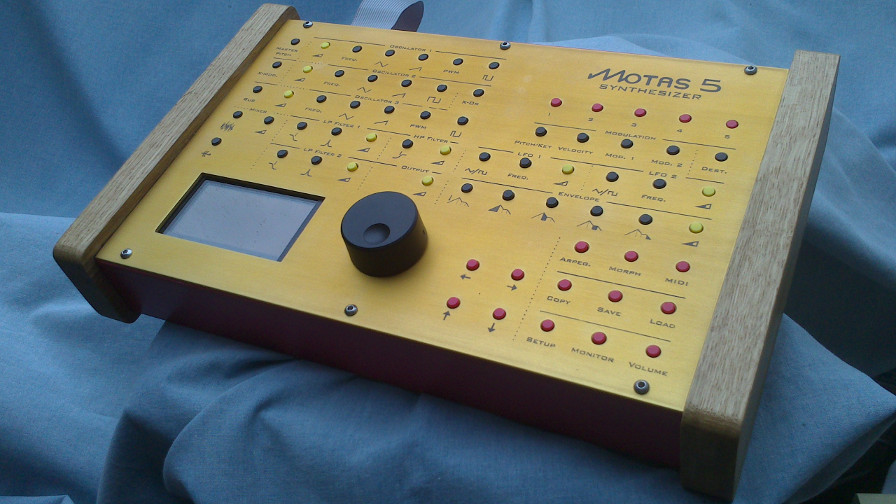
Motas-6
The latest and greatest model (so far…) is Motas-6 which is my first production synthesizer on sale to the general public. It was developed from Motas 5 adding lots of new hardware features (e.g. CV/gate inputs, analogue phase modulation), superior sound quality, great build quality and an improved user interface with real analogue pots and LEDs.
Motas-6 with the white painted top-panel finish:
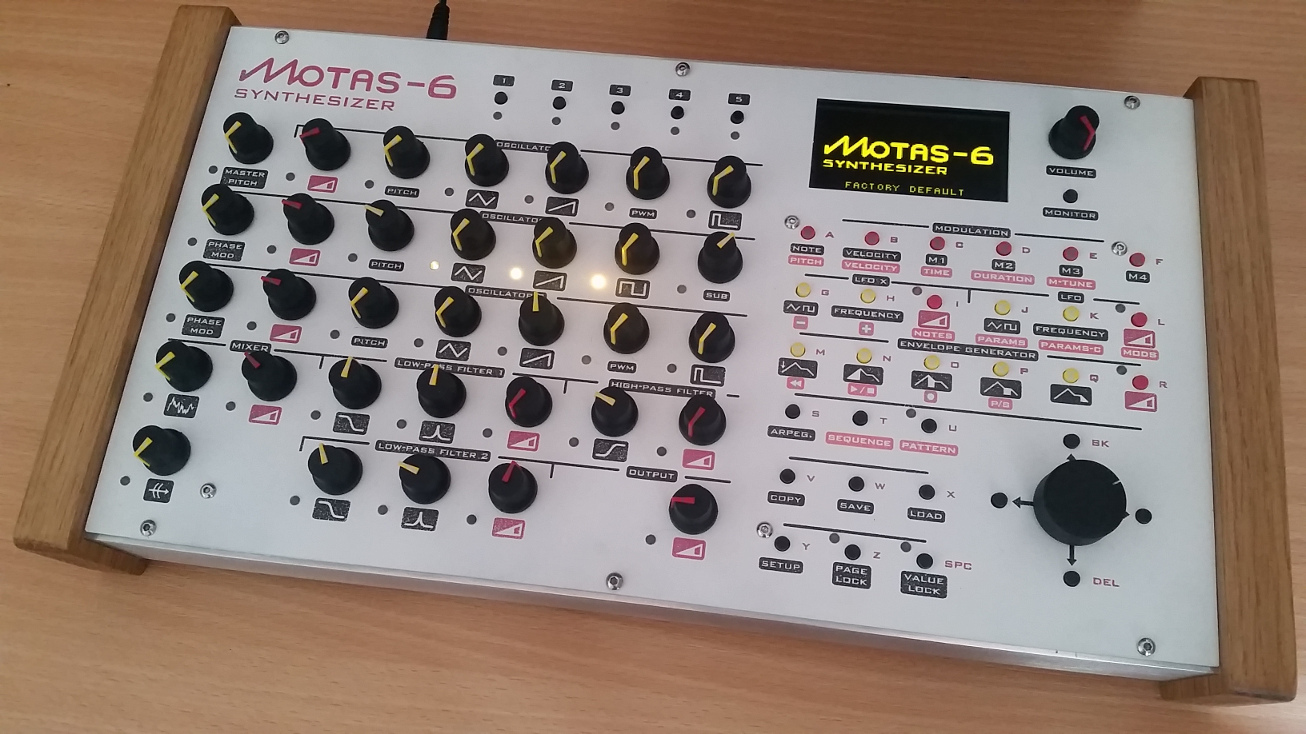
Motas-6 with the top-panel finish in stainless-steel:
